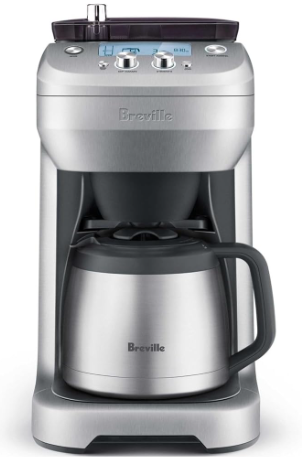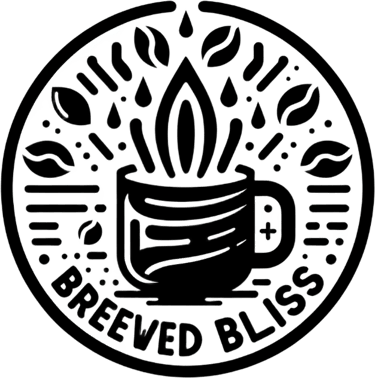The Best Times of Day to Drink Coffee: Insights from Science
BLOG NEWS
10/2/20254 min read


The Science of Circadian Rhythms
Circadian rhythms are internal processes that follow a roughly 24-hour cycle, regulating various physiological functions in organisms, including sleep-wake cycles, hormone release, and other bodily functions. Influenced by environmental cues, particularly light, these rhythms play a crucial role in determining our energy levels and alertness throughout the day. The science behind circadian rhythms reveals how our bodies are naturally attuned to different times of the day, affecting everything from cognitive performance to metabolic processes.
One key hormone that operates within this framework is cortisol. Cortisol, commonly referred to as the "stress hormone," plays a fundamental role in energy regulation and alertness. Its production follows a specific pattern, peaking shortly after awakening and gradually declining throughout the day. Understanding the timing of cortisol production is essential when considering optimal coffee consumption, as caffeine can interact with this hormonal cycle in significant ways.
Drinking coffee during times when cortisol levels are already high may not provide the desired boost in alertness. For instance, the peak cortisol levels usually occur between 8 AM and 9 AM, coinciding with many people's morning routines. Consuming coffee at this time can lead to diminished effects on alertness, as the body’s natural energy level is already heightened. Conversely, consuming coffee in the later morning or early afternoon, when cortisol levels have dropped, may enhance alertness and provide a more favorable effect on cognitive performance.
Moreover, excessive coffee consumption at inappropriate times can disrupt circadian rhythms, leading to potential negative health outcomes. Understanding the science behind hormonal fluctuations and incorporating this knowledge into coffee-drinking habits can help individuals maximize their alertness and overall productivity throughout the day.
Morning Coffee: Boosting Alertness and Productivity
Drinking coffee in the morning is a ritual for many individuals seeking to enhance their alertness and productivity. Scientific research indicates that the optimal window for caffeine consumption falls between 9 AM and 11 AM. During this period, cortisol levels in the body are at their lowest, which allows caffeine to effectively amplify alertness without competing against the natural energy boost provided by cortisol. When coffee is consumed at this time, it can lead to a more pronounced elevation in cognitive functions, providing a substantial advantage for morning tasks.
A number of studies corroborate the benefits of morning coffee consumption. For instance, a research study published in the journal *Psychopharmacology* revealed that caffeine intake can significantly enhance attention span and improve reaction times during the early hours of the day. Participants who consumed coffee in the morning exhibited markedly improved performance on attention-related tasks compared to those who abstained from caffeine. Furthermore, a survey conducted by the National Coffee Association found that nearly 75% of coffee drinkers reported higher levels of focus after their morning brew, emphasizing the positive correlation between morning coffee and enhanced productivity.
Afternoon Slumps: When to Reach for a Cup
Many individuals experience a noticeable dip in energy levels during the mid-afternoon, typically between 2 PM and 3 PM. This phenomenon, often referred to as the "afternoon slump," is primarily a result of the body's natural circadian rhythms and the post-lunch dip in alertness. Physiologically, this drop in energy can be attributed to several factors, including fluctuations in blood sugar levels, the body's internal clock, and potential postprandial somnolence – the feeling of drowsiness following a meal. During this period, individuals may notice a decline in concentration, motivation, and overall cognitive performance.
One effective way to counteract the afternoon slump is through the consumption of coffee. The caffeine found in coffee acts as a central nervous system stimulant, blocking adenosine receptors, which play a critical role in promoting sleepiness. By mitigating the effects of adenosine, caffeine can help elevate mood, enhance alertness, and improve performance. Research supports that a moderate dose of caffeine can boost cognitive functions, such as attention and reaction time, making it an ideal choice for those striving to maintain productivity during that sluggish period.
However, while coffee can serve as a valuable tool in combating fatigue, it is essential to approach consumption thoughtfully. Drinking coffee too late in the day may interfere with nighttime sleep quality, leading to a cycle of fatigue and dependence on caffeine. Therefore, it is advisable to limit coffee intake to earlier in the afternoon, ensuring that it does not become a habit that disrupts one's natural sleep patterns. Considering these factors can provide a balanced approach to coffee consumption, allowing individuals to enjoy its benefits while minimizing potential drawbacks.
Evening Considerations: When to Avoid Coffee
For many individuals, drinking coffee is an integral part of their daily routine, often enjoyed throughout various times of the day. However, the evening presents particular considerations regarding coffee consumption, mainly due to its caffeine content. Caffeine is a well-known stimulant that can interfere with sleep quality and overall health when consumed too late in the day. Studies have shown that ingesting caffeine even six hours before bedtime can significantly disrupt sleep patterns, leading to difficulties in both falling and staying asleep.
Research indicates that caffeine can inhibit the natural production of melatonin, the hormone responsible for regulating sleep-wake cycles. Consequently, the ideal cut-off time for caffeine intake is typically recommended to be no later than 2 PM to 4 PM, depending on individual sensitivity to caffeine. This guideline is essential for those who value uninterrupted sleep or are particularly sensitive to the effects of stimulants. By adhering to these cut-off times, individuals can improve their chances of achieving restful sleep, thereby enhancing overall health and well-being.
For those seeking evening relaxation without the adverse effects associated with caffeine, there are numerous alternatives available. Herbal teas, such as chamomile or peppermint, offer soothing properties without the stimulating effects of coffee. Additionally, engaging in calming activities such as reading, meditation, or light stretching can provide relaxation during the evening hours, promoting a more restful night's sleep. By making these conscious choices regarding coffee consumption in the evening, individuals can better prioritize their sleep health and overall quality of life.
One of our most favorite coffee makers...
Breville BDC650BSS Grind Control, Silver


Click 'Shop Now!' to find on Amazon now....
Specs
The Breville Grind Control BDC650BSS is a drip coffee machine with an integrated burr grinder and a number of programmable features. The water tank capacity is around 60 oz (roughly 12 cups), and the bean hopper holds about ½ lb of beans. It has an adjustable grinder with multiple grind settings, and also allows you to use pre-ground coffee. There’s an LCD display that shows info like grind size, strength, number of cups, and also offers a timer/auto start so you can program when the brew should begin. It uses a thermal, dual-wall stainless steel carafe, which helps keep the coffee hot without needing a warming plate. In terms of size, it measures roughly 8.5 × 12.5 × 16.3 inches (depth × width × height) and is comparatively heavy—solid build quality with metal/stainless finishes. It has strength control (multiple strength settings), small-batch mode, programmable settings, auto shut‑off, and indicators when cleaning or descaling is recommended.
Pros and Cons
Pros
Offers great freshness: Beans are ground immediately before brewing, which helps preserve aroma and flavour.
High level of customisation: You can adjust grind size, choose strength, pick how many cups, and schedule auto‑start.
Thermal carafe: keeps coffee hot for a long time without needing a hot plate, which is better for flavour and safety.
Big capacity: both for beans and water (large hopper, large tank), which means less frequent refilling for households.
Good build and stylish design: stainless steel finish looks premium, controls and display are relatively intuitive.
Cons
Cleaning and maintenance are more involved: the grinder chute, basket, hopper etc. need frequent cleaning to avoid clogging or stale grounds.
Grind fineness limits: achieving very fine grinds (like for espresso) is inconsistent or not possible; the machine isn’t made for espresso.
Carafe pour/drape issues: some users report that the carafe drips when pouring, or leaves mess due to design.
Noise: the grinding is fairly loud, and the process of grind + brew is more involved than simple drip machines.
Size and footprint: fairly large and bulky, takes up counter space; weight and height mean more care in placement.
Cost: higher price than simple drip machines; plus more cost in maintaining (descaling, replacing filters etc.).
Our Review
We’ve used the Breville BDC650BSS for a few weeks in regular daily use, and overall it delivers an excellent mid‑to high‑end drip‑coffee experience. What stands out is the convenience of having the integrated grinder: it really does make a difference in terms of flavour when using fresh beans. The strength and grind controls give enough leeway to adjust for different beans, roast levels, or personal taste. Brewing a full carafe feels solid, and the thermal carafe does a good job keeping coffee hot for hours without degrading the flavour as quickly as a hot plate would.
The display and timer are helpful features — being able to program a morning brew or set small‑batch mode without wasting water or over‑brewing adds real value. The aesthetics are clean; the stainless steel finish gives it a premium feel, and the machine seems well put together.
On the flip side, the effort required to keep it running smoothly is higher than for a simpler machine. The grinder chute tends to get clogged, especially if you use oily or dark roast beans, so regular cleaning is essential. The drip/carafe pour issues do get irritating — you sometimes need to pour carefully or wipe drips afterward. And while the strength settings are useful, there’s a trade‑off: finer grind isn’t as precise, so for someone who wants espresso or very fine grind textures, this won’t replace a dedicated grinder or espresso machine. Also, cost of ownership is higher, both up front and in upkeep.
In sum, if you are someone who drinks multiple cups a day, cares about flavour and freshness, and don’t mind spending a bit more effort/attention, this machine is excellent. If you prefer something “set‑and‑forget”, very low maintenance, or want espresso capability, it may be more than needed or may disappoint in those areas.
Other Customer Reviews
From what people who own it tend to say:
Many praise the flavour and temperature of the brew. Users often comment that the coffee stays hot well, thanks to the thermal carafe, and the freshness of grinding just before brewing is repeatedly mentioned as a strong plus. The ability to make a full carafe (12 cups) is appreciated, especially by larger households.
However, several consistent frustrations come up. One is clogging or “grounds getting stuck” in the grinder chute, especially with oily beans. Another is that the grind settings can be inconsistent — some batches come out coarser or finer than expected. Also, the carafe seems to drip or spill unless poured carefully; the design of the spout isn’t perfect according to some. Some users also report problems with durability: complaints about parts failing over time (hopper release, seals, controls), and that the custom settings (e.g. grind calibration or timer) sometimes reset after power outages or fluctuations. Many say if you don’t clean it often, performance deteriorates — stale grounds, clogging etc. Some people love theirs years later and say it’s lasted well; others feel later builds are less durable than older ones.
